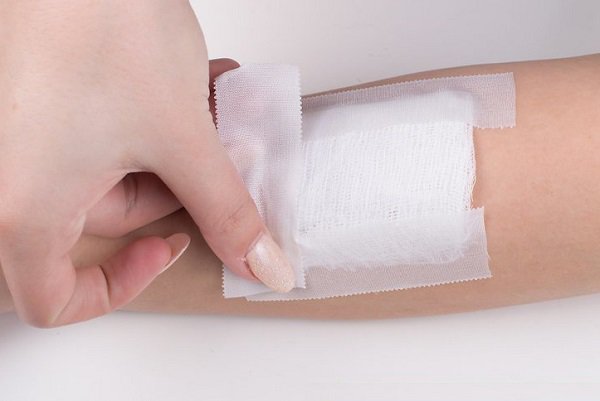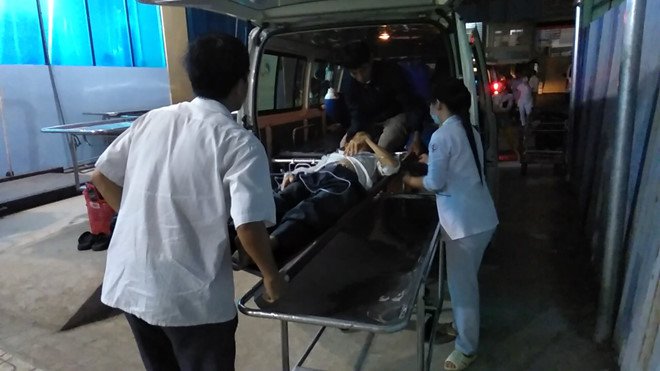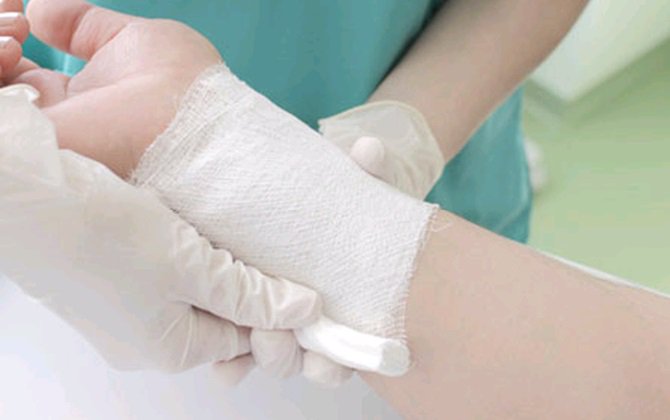Article written by doctors of Emergency Resuscitation Department, Share99 Phu Quoc International Health Hub
First aid skills at home are essential for everyone. Doing first aid the wrong way will make the patient's condition more critical. Here are some common mistakes when first aid at home.
1. Disinfect wounds with antiseptic solution
When an open wound causes bleeding in addition to bandages to heal the wound, the next thing everyone thinks about is to disinfect the wound. According to the usual way of thinking, disinfecting wounds with antiseptic solution is usually available at home or purchased from pharmacies such as old oxygen solution, 70-degree alcohol or iodine alcohol solution (Povidin, Betadin) will have an antiseptic effect early on the wound, preventing infection from worsening and helping the wound heal quickly. But this is a misconception, un scientifically, since these substances damage the cells and healing tissue that affects the process of wound healing afterwards. The best way is to wash the wound under clean water, which can apply a little fat containing antibiotics (Bacitracin, Neosporin) and then bandage the wound with clean gauze or leave it open if possible, take the victim to the hospital for further treatment.
2. Tie the garo in the hand or leg to stop the bleeding
This is a common hem stopping method, but preventing blood from flowing to a certain part of the body increases the risk of permanent tissue damage and even causes necrosis to amputate the amputate. The way that we should do it is to use sterile gauze or clean cloth, pressing the wound to heal. You can simply use one finger to pick up the bleeding until the victim enters the emergency room.
3. Garo chi when bitten by a snake or insect
It is not recommended to bandage the garo after being bitten by a snake because the fastening pole can cause blood not to reach the location that has been forced to make this part easily necrotic. When removing the bandage, the poison will rush to the heart at the same time, making the condition worse can be life-threatening. Patients bitten by snakes must not apply ice, cold compresses, incisions or apply chemicals, drugs, leaves … on the bite.

The best way after a snake bite is to rinse the wound, bandage the wound normally so as not to put pressure and cause bruising, or a splint bandage just like when breaking limbs.
If the patient is necrotic at the bite site, it is necessary to rinse with physiological saline, use clean gauze, bandage, and then transfer to the hospital as soon as possible. While transporting the victim to emergency, the bitten area should be lower than the position of the heart, if in the legs, hands can be left with hands or legs.
4. Head up backwards to prevent nosebleeds
People tend to turn their heads up after nosebleeds because it looks very scary. But the back of the head only causes blood to flow down the throat, you will swallow blood and do not know how much blood you bleed, and more importantly, will not hold the bleeding.
The right way to do this is to keep your head straight to relieve blood pressure in the nasal veins. Use your thumb and index finger to tighten both nostrils for about 15 minutes and breathe through your mouth. After 15 can release your hands, and if the blood still flows, clamp it for another 15 minutes. Most cases of nosebleeds are benign and will run out on their own. It is recommended to go to the hospital if the blood does not hold after 30 minutes or nosebleeds occur after an accident, such as a car accident.
5. Snore the victim's mouth with a pencil or wooden stick to prevent bites to the tongue
If you give an object of the victim's mouth when they have a seizure, the victim can swallow it. Objects such as pencils or wallets can cause airway blockages or the victim will swallow when they start breathing. And the risk of choking foreign objects is much greater than the benefits of preventing the victim from biting the tongue.
The right way to do it is not to do anything, or to push the victim to lie on his side so that the airways are ventilated. During an seizure, the victim may have strong convulsions, bubbling edges and even cyanosis. But these seizures will run out on their own – so there's nothing you can do but call for help and keep victims away from the dangers around them, like sharp objects, glasses, temperature, or falling into the water.
6. Trying to get the victim out of the car in distress
One of the most severe injuries, especially after a car accident, is the damage to the cervical spine. When moving a person without properly fixing them, they can become paralyzed, even die from compression of the neck marrow. In these cases, you should call an ambulance. In the meantime, reassure the victim, make sure the victim is breathing well and has a comfortable position as possible, bleeding bandages and dysplints if possible.
7. Given that the nearest hospital is the best hospital for emergency access

When there is a problem, it is not in dispute to go to the doctor as soon as possible, but sometimes it would be wiser not to turn into any hospital. For example, if you have a heart attack, then it is better to go to a hospital that can conduct coronary intervention. It is best that in case of emergency, the first action is still to call an ambulance, but be ready to go. If the operator or ambulance staff recommend going to another specialist hospital farther than the nearest one, follow their advice. Depending on the emergency, the expertise of these facilities may be the difference between life and death. If hospital A is 5 minutes away and hospital B is 20 minutes away, people are often worried because they have to go further and take longer, but once you are there, hospital B can do things that hospital A can't do.
8. Blankets as family mourners tremble
Many mothers who hear their children crying will immediately put on blankets for their children, and dress them warm immediately. This is extremely dangerous for children with high fever, the higher the body temperature, the more cold the young children are, and the colder they cry and until the "peak" of the child's body temperature is above 39 degrees, the child convulses, the body purple , which can even be life-threatening. Children (sometimes for adults) when the fever is too high, people always tremble, the limbs are cold, sometimes purple grains are seen in the limbs. The cause of this phenomenon is that when the fever is too high, it will cause peripheral contractions, so there is a cold feeling tremor but in fact the temperature in the person is hot, sometimes up to 40 – 41 degrees Celsius is very dangerous.
When the child has malaria tremors, the mother can give the child antipyretics to drain the heat. In particular, heat drainage through the drainage is very important. Therefore, after give the child antipyretics, parents should absolutely not put a blanket on the child. Do not close the room door, but must open it and turn on the fan to ventilate the room. So the child will quickly run out of cold.
For direct advice, please click hotline number or register online HERE. In addition, you can register for remote consultation HERE
- The importance of first aid
- First aid for fire burns, boiling water burns
- How to handle bee stings

